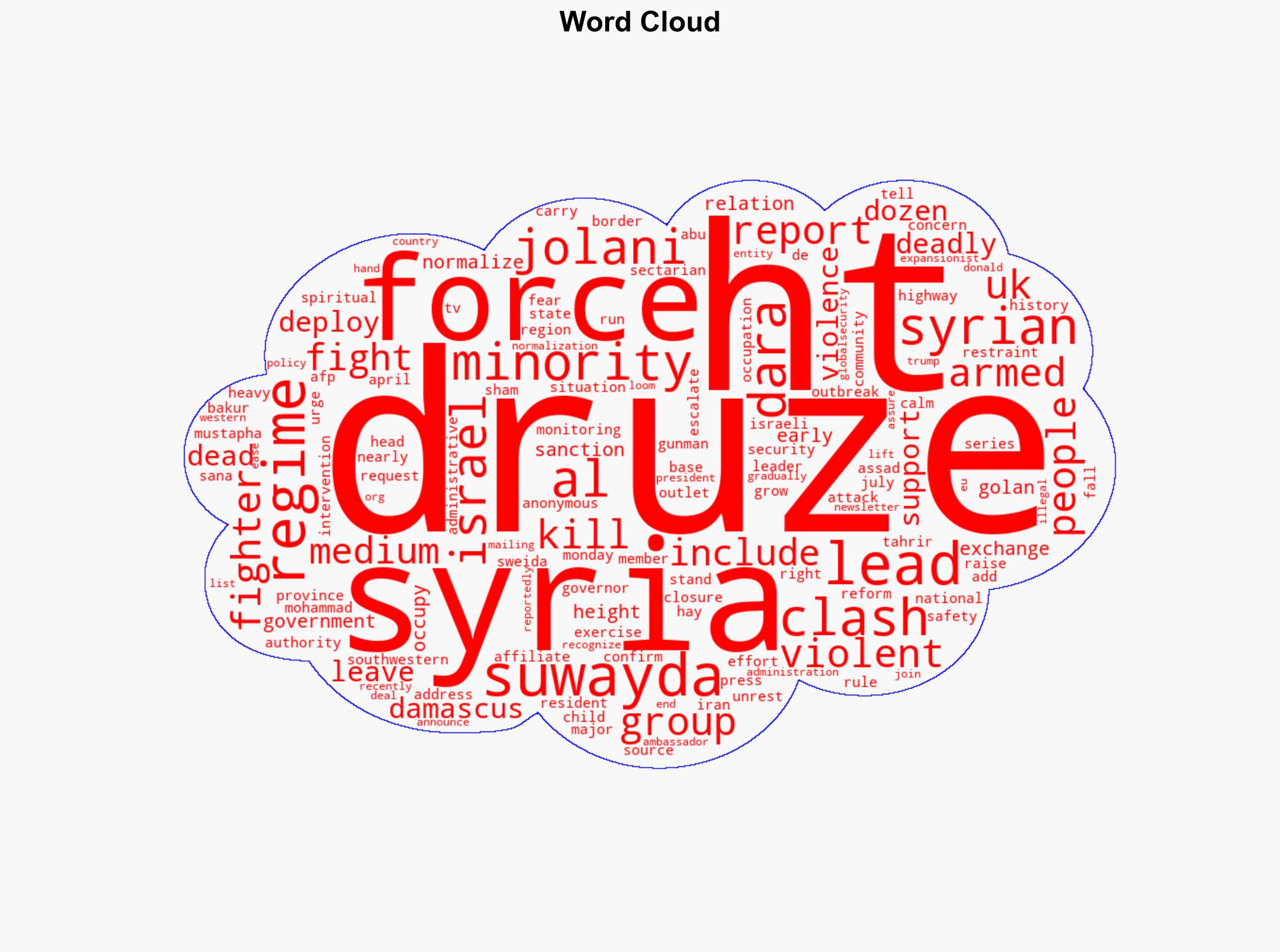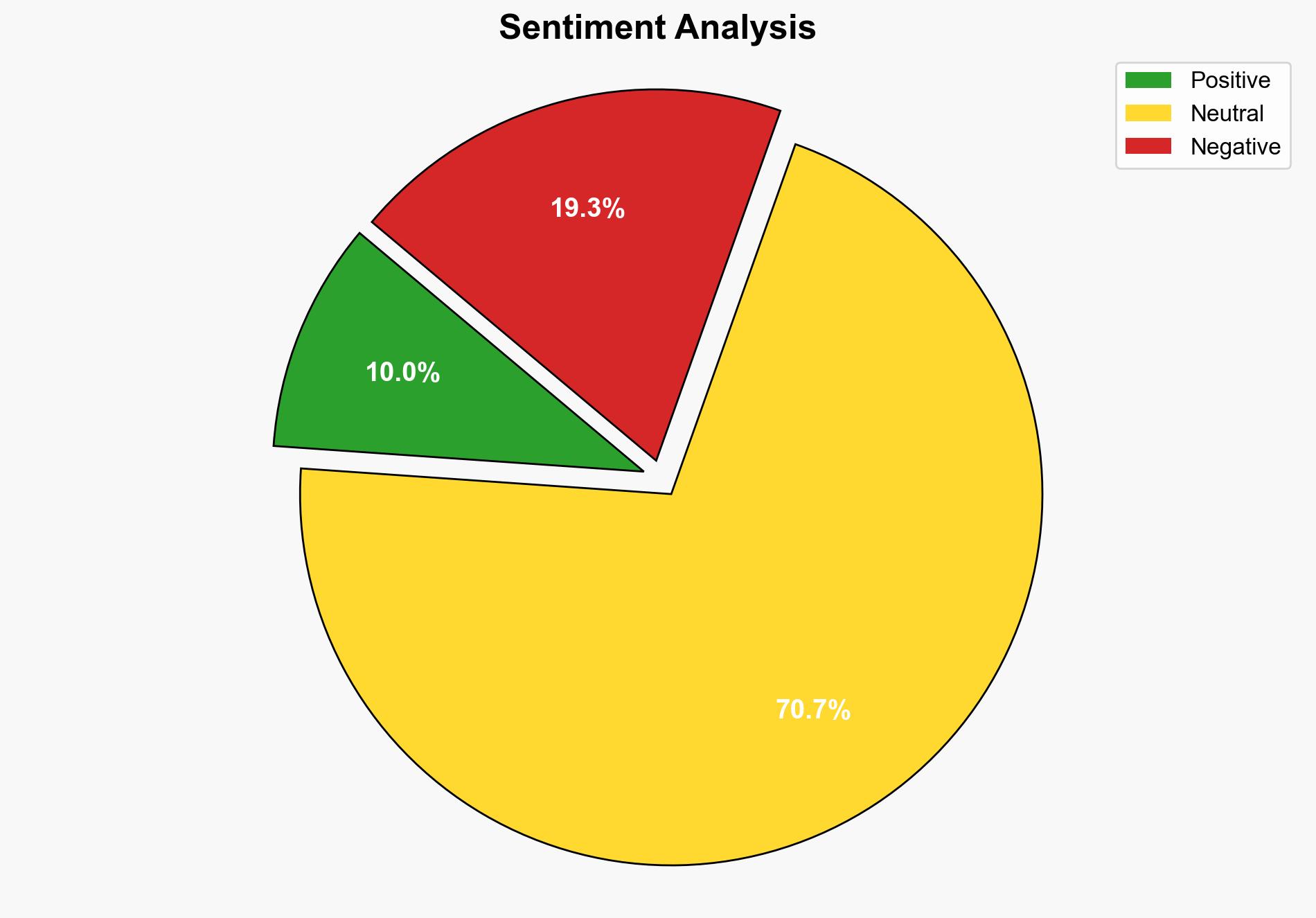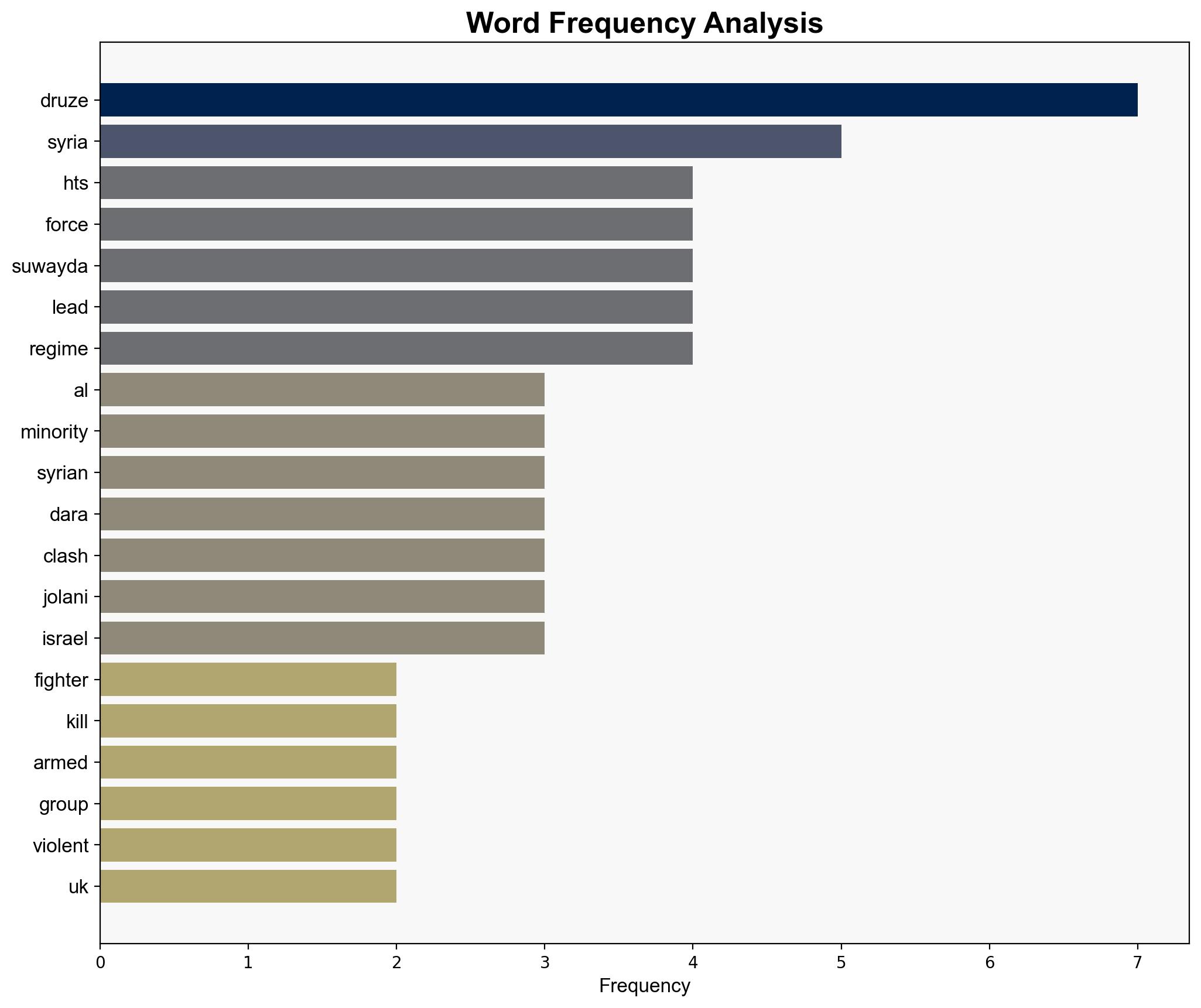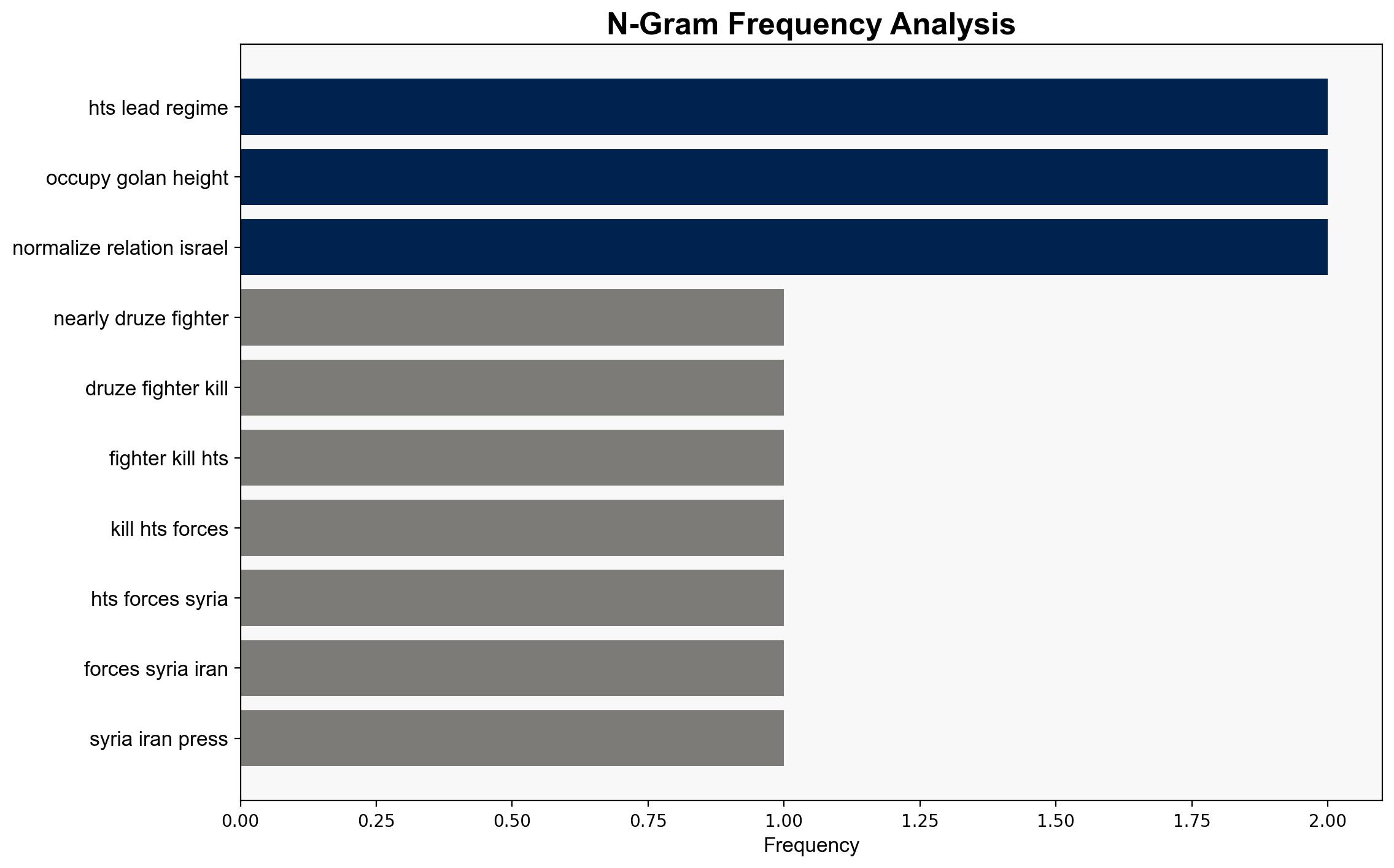Nearly 30 Druze fighters killed by HTS forces in Syria – Globalsecurity.org
Published on: 2025-07-14
Intelligence Report: Nearly 30 Druze Fighters Killed by HTS Forces in Syria
1. BLUF (Bottom Line Up Front)
Recent violent clashes in Syria’s southwestern provinces of Sweida and Dara have resulted in the deaths of nearly 30 Druze fighters at the hands of Hay’at Tahrir al-Sham (HTS) forces. This escalation highlights the ongoing sectarian tensions and the potential for further destabilization in the region. It is crucial to monitor these developments closely and consider diplomatic interventions to prevent further violence.
2. Detailed Analysis
The following structured analytic techniques have been applied to ensure methodological consistency:
Causal Layered Analysis (CLA)
The surface events indicate a violent confrontation between HTS forces and the Druze community. Systemic structures reveal ongoing sectarian divides and the strategic interests of regional powers. Worldviews are shaped by historical grievances and geopolitical alignments, while myths perpetuate narratives of resistance and survival among minority groups.
Cross-Impact Simulation
The conflict could exacerbate tensions in neighboring countries, potentially affecting alliances and economic dependencies. The closure of the Damascus-Suwayda highway may disrupt trade and humanitarian aid routes, impacting regional stability.
Scenario Generation
Plausible futures include continued violence leading to broader sectarian conflict, a negotiated ceasefire facilitated by international actors, or a shift in regional power dynamics if external powers intervene.
3. Implications and Strategic Risks
The ongoing violence poses significant risks to regional stability, with potential spillover effects into neighboring countries. The sectarian nature of the conflict could lead to increased recruitment by extremist groups, further complicating counter-terrorism efforts. Additionally, the humanitarian impact on the Druze community may draw international condemnation and pressure for intervention.
4. Recommendations and Outlook
- Encourage diplomatic engagement with regional stakeholders to de-escalate tensions and promote dialogue between conflicting parties.
- Enhance monitoring of extremist group activities to prevent further recruitment and radicalization.
- Scenario-based projections:
- Best Case: Successful mediation leads to a ceasefire and stabilization efforts.
- Worst Case: Escalation into a broader sectarian conflict with regional involvement.
- Most Likely: Continued skirmishes with intermittent diplomatic efforts.
5. Key Individuals and Entities
Abu Mohammad al-Jolani, Mustapha al-Bakur
6. Thematic Tags
national security threats, sectarian violence, regional stability, counter-terrorism





